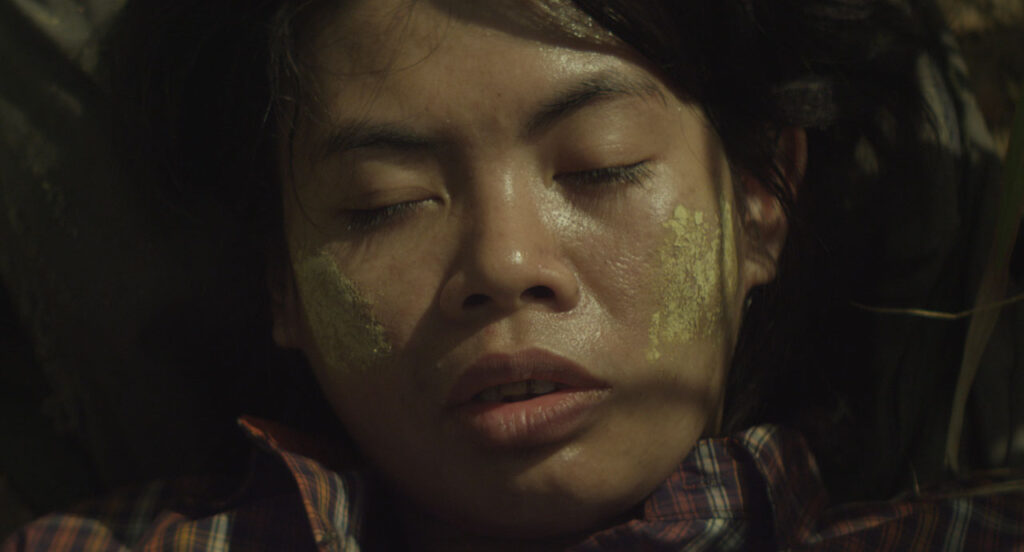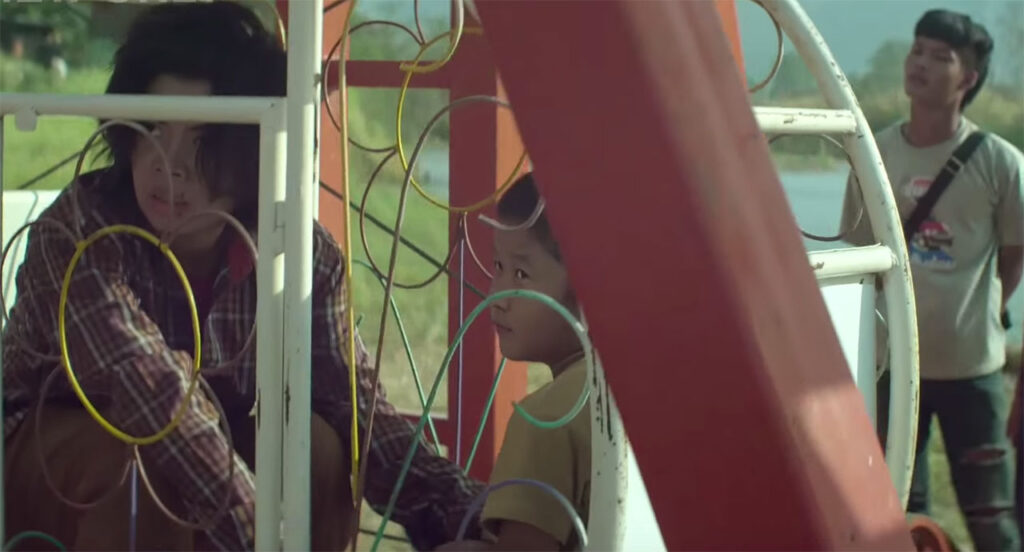Ferris Wheel
This article contains spoilers for the following film: Ferris Wheel

Under the blanket of the dark night, a mother and her son arrive in Thailand after an arduous trip across the border from Myanmar. They stand out like a sore thumb to the Thai locals with their faces plastered with yellow Thanaka paste from Myanmar. Intricate and hard-hitting, Ferris Wheel takes us along on their journey as they scour the foreign land in search of liberation.
Thai filmmaker Phuttiphong Aroonpheng delivers his themes of hope and suffering through his attention to detail. It allows audiences familiar with the situation in that region to identify and relate, while igniting curiosity in those that are not as familiar with the culture.
The film opens with the end of their rough journey into Thailand. They are in a dark forest with two menacing Thai soldiers who only let them cross after threatening them with rifles. This is merely the start of the many injustices they will experience during their time as refugees. Ferris Wheel is in some ways similar to a documentary. A man smokes his cigarette while staring at the camera, as a bystander would while the mother and son weave their way through the crowd of refugees at a day market. It leaves viewers wondering if the people in the scene even knew that they were being filmed.

We follow their first few days in Thailand where they struggle to survive, sleeping in fields and eating scraps of food by the roadside. They seem so out of place that it is almost as if they do not even exist in the eyes of the Thai locals. The mother constantly tries to reach out to her brother in Thailand through a phone call but fails.
When she finally reaches him, the call is cut off abruptly when her phone card runs out of cash. She leaves her son alone while she tries to buy a phone card from a racist shop owner but gets stuck inside when a group of Thai soldiers walk into the store. The scene exemplifies what is at stake for so many refugees. Their lives are literally in the hands of the Thai locals the moment they step into their country and they live by their rules.
While the son sits alone awaiting his mother’s return, he encounters a mascot in the form of a monkey who starts playing with him. In Thailand, the monkey is a part of the Buddhist lore and it embodies the promise of salvation to those that seek it. The filmmaker cleverly uses the mascot as a representation of what Thailand is like through the lens of the Myanmar refugees. They view Thailand as an escape from the terrors they face back in Myanmar and place their hopes for the future in it.

The mascot eventually leads the boy away from his mother into a fun fair, where Thai children are playing. The buoyant music accompanied by the laughter of the Thai kids enjoying themselves juxtaposes and perhaps mocks their ‘freedom’, a feeling they will never experience like locals in their own homes. The mascot locks mother and son, along with all the other refugees into cabins on the Ferris wheel and starts the ride.

The colourful metal grills of the cabins resemble that of a prison gate. If the Ferris wheel was a prison cell, the lively fairgrounds of the carnival contrasts glaringly with the typical solemn environment that surrounds a prison. It may seem like the filmmaker was trying to convey that the refugee camps in Thailand are just dressed up prison cells for the Myanmar refugees. Like the mascot, it is merely a façade and that there is no true form of salvation for them in Thailand.
The film cuts between the faces of the others who are literally in the same position as them – stuck in the suspended cabins of the Ferris wheel; and in the real world, trapped in the various refugee camps across Thailand where they are denied the liberty of freedom.

As the festive music dies down, the static camera leaves us in the cabins with the refugees. The Ferris wheel has stopped spinning. The sounds of the swaying cabins pierce the air. The transition from the festive music to the rhythmic beat of the swinging cabins reflects the slowing down of heartbeats of the refugees as they take in this foreign land in which they are strangers.
The serene backdrop swings shakily as the cabins hang in mid-air. It contrasts with the jarring deadpan expressions on the refugee’s faces. The unsteadiness of the cabins illustrates the questionable situation that they are in, and claustrophobia hits despite of the vast scenery on the outside. The refugees close their eyes in hopes of one day returning home to freedom.

Like many before them, they have successfully crossed the border and look forward to a better life in Thailand. Yet, the extent of the discrimination and prejudice towards these refugees are revealed to us time and time again. Leaving the us with a moving truck, we follow, as it drives on what seems to be a never-ending road. Its destination is unknown and we are left with uncertainty about what lies ahead for them


